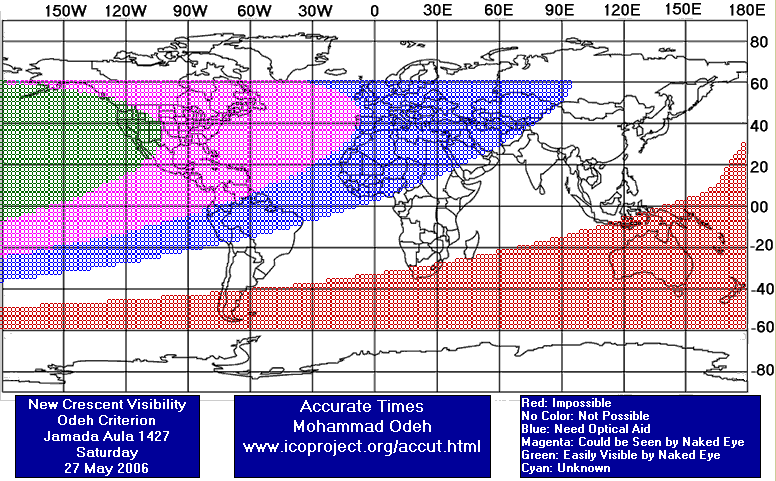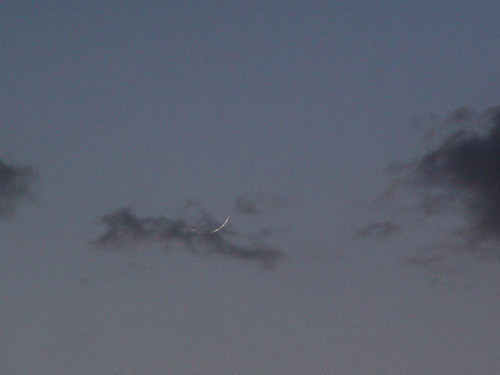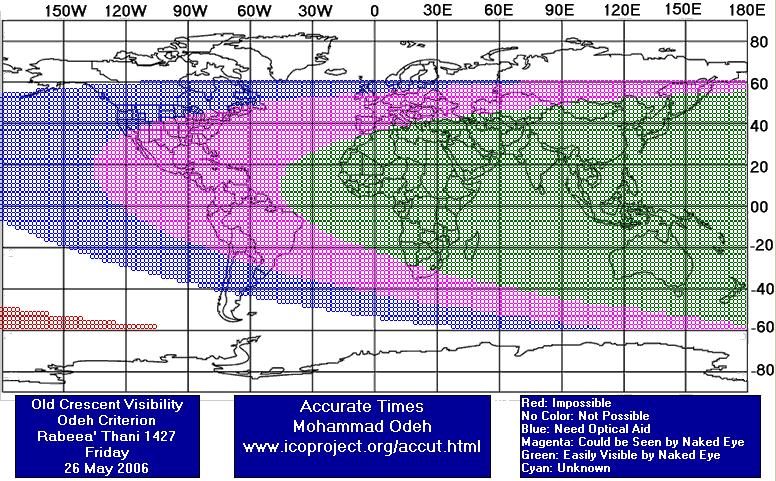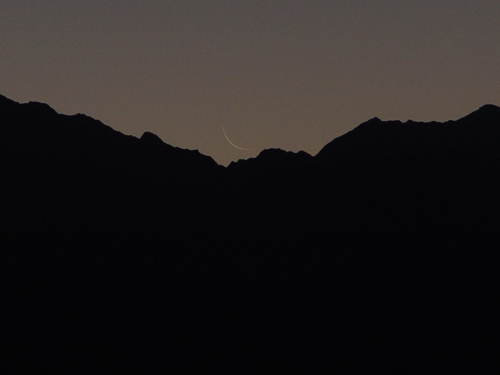Visibility of Jumadal Awwal Crescent
(1427 AH)
- When to Observe Jumadal Awwal Waxing (NEW) Crescent ?
- Jumadal Awwal Waxing (NEW) Crescent Observation Results
- The OFFICIAL First Day in Different Countries
- When to Observe Rabee' Thani (OLD) Crescent ?
- Rabee' Thani Waning (OLD) Crescent Observation Results
The geocentric conjunction (Geocentric New Moon) will occur Inshalla on (Saturday 27 May 2006) at
04:02 UT.
Sighting the new crescent on (Saturday 27 May 2006) is shown in the below graph using the program Accurate Times by Mohammad Odeh according to Odeh criterion. Where:-
According to the actual sighting of the crescent, the start of Jumadal Awwal should be on Sunday 28 May 2006 in western and central parts of the world, while it should start on Monday 29 May 2006 in eastern parts.
- Results of seeing the crescent, and the first day of the month in different countries will be added here Inshalla as we receive the reports from ICOP's members. If you wish to be a member in ICOP, or to know more about it, kindly click here.
So far, the earliest sighting of the crescent was on Saturday 27 May 2006 from USA.
Saturday 27 May 2006:
Sunday 28 May 2006:
Sunday 28 May 2006:
Monday 29 May 2006:
The geocentric conjunction (Geocentric New Moon) will occur Inshalla on (Saturday 27 May 2006) at
04:02 UT.
Sighting the OLD crescent on (Friday 26 May 2006) is shown in the below graph using the program Accurate Times by Mohammad Odeh according to Odeh criterion. Where:-
When to Observe Jumadal Awwal Waxing (NEW) Crescent ?


Jumadal Awwal Waxing (NEW) Crescent Observation Results
New Moon Crescent Observation Report
===============================
May 2006
Location = Tucson, Arizona (USA)
Longitude = 32 17 01 W
Latitude = -111 03 43 N
Elevation = 683 meters
Time Zone = -7.0 hours
Surface conditions at 6:55 p.m. (local)
Tucson International Airport (805 m):
Temperature = 30 degrees Celcius
Relative Humidity = 18 percent
Atmospheric Pressure = 1002 mb
From Accurate Times 5.1, By Mohammad Odeh:
* Settings:-
- Calculations for Jamada Aula 1427 AH Waxing Crescent (New, Evening).
- Crescent Visibility on: Saturday 27/05/2006 CE
- Calculations are Done at Best Time at: 19:56:53 LT
- Calculations are Topocentric.
- USA (AZ) Oro Valley, Long: -110:57:52.2, Lat: 32:25:13.5, Ele: 842.0, Zone:-7.00
- Summer time is: Off
- Height above mean sea-level affects rise and set events.
- Refraction Settings: Temperature: 18 °C Pressure: 1010 mb
- Delta T: 64.92 Second(s)
==============================================================================
- T. Conjunction Time: 26/05/2006 CE, 23:08:48 LT
- Julian Date at Time of Calculations: 2453883.62283
- Sunset: 19:28:29 LT T. Moon Age: +20H 48M 04S
- Moonset: 20:32:22 LT Moon Lag Time: +01H 03M 52S
- T. Moon Right Ascension: +05H 02M 17S T. Moon Declination: +27°: 14':33"
- T. Sun Right Ascension: +04H 19M 16S T. Sun Declination: +21°: 25':21"
- T. Moon Longitude: +77°:09':35" T. Moon Latitude: +04°:26':34"
- T. Sun Longitude: +66°:39':48" T. Sun Latitude: -00°:00':04"
- T. Moon Altitude: +04°:14':37" T. Moon Azimuth: +299°:46':41"
- T. Sun Altitude: -07°:04':49" T. Sun Azimuth: +300°:59':25"
- T. Relative Altitude: +11°:19':27" T. Elongation: +11°:23':19"
- T. Relative Azimuth: -01°:12':44" T. Phase Angle: +168°:34':58"
- T. Crescent Width: +00°:00':19" T. Moon Semi-Diameter: +00°:15':41"
- T. Illumination: 00.99 % G. Horizontal Parallax: +00°:57':30"
- T. Magnitude: -05.12 G. Distance: 381369.15 Km
- According to Odeh Criteria, using the following values at Best Time:
* Moon-Sun Topocentric Relative Altitude =+11°:19':27" (11.3°)
* Topocentric Crescent width = +00°:00':19" (0.31')
* q = 6.05
* The Crescent Visibility is: Easily Visible By Naked Eye.

Jumadal Awwal Crescent
By Hazarry Haji Ali Ahmad, 28 May 2006

Jumadal Awwal Crescent
By Alireza Mehrani, 28 May 2006

The OFFICIAL First Day in Different Countries

When to Observe Rabee' Thani Waning (OLD) Crescent ?







